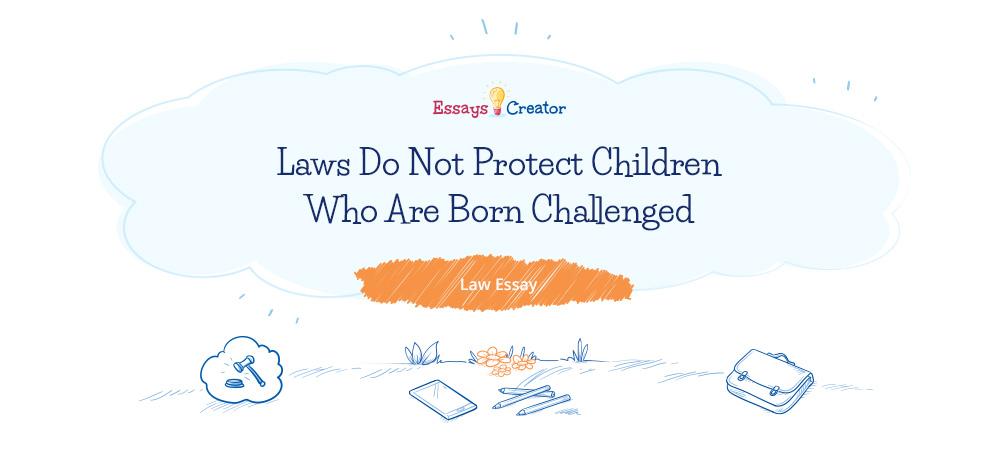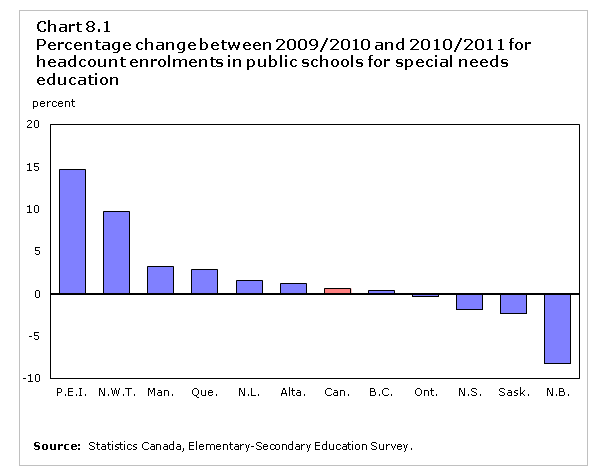
Nearly ten percent of the world’s human population lives with some form of disability. Most of this percentage is made up of people born with disabilities, while the other percentage acquires some form of disability due to age, illnesses, or accidents (Read, Clements and Ruebain 18). Promoting the Rights of Children with Disabilities asserts that The United Nations Convention on the Rights of the Child states that all children including disabled children have equal rights. This convention is the most comprehensive declaration of children’s rights ever created and is the most widely- sanctioned universal human rights accord in the history of humankind. The UNCRC contains 54 articles that embrace all facets of a child’s life. It also elaborates on the civic, political, financial, societal, and ethnic rights that children all over the world are eligible for. It also details how parents, guardians, and governments should work hand in hand to ensure that all children are in a position to enjoy their rights without any discrimination. The rights of all disabled people, children included, were restated and given a much-needed push by the ratification of the Convention on the Rights of Persons with Disabilities in 2007 by the delegates of an extraordinary 81 countries. This was in line with an explicit declaration by the Heads of State and Government espoused by the United Nations General Assembly after the Special Session on Children in 2002.
Get a Price Quote
Despite measures that have been enforced to ensure that all children are accorded their rights, it is disheartening to observe that the rights of children who are challenged are not taken into consideration. Children who are challenged and their families frequently suffer obstacles to the gratification of their fundamental human rights and their incorporation into society. Their capabilities are disregarded, their gifts are undervalued and their wants are often accorded a low precedence (“Promoting the Rights.”)
However, the obstacles they encounter are more often an outcome of the society and laws governing the society in which they live than as a product of their disability. The law discriminates against children who are born with disabilities because there are no provisions that specifically cater to their protection.
Order your Law Essay help today!
Disability and Inclusion
There has been a mounting agreement about the point that some of the paramount constraints and inadequacies underwent by both disabled children and adults is unquestionably how society is structured to exclude them from day-to-day activities. This denies them opportunities enjoyed by society. According to records of disability is on one part based on segregation, bigotry, and stigmatization. Habitually isolated from society, people living with disabilities, mostly children, have been considered as recipients of charity and inactive beneficiaries of government welfare programs (Read, Clements and Ruebain 18). The social model of disability has led to a change in focus from a child’s restrictions in society resulting from disabilities to the actual hurdles within the society that hinder such children from gaining access to basic amenities. These hurdles hinder a child from rising to their maximum potential and enjoying their rights. This aspect forms the spirit of the social model of disability. With the help of individuals suffering from disabilities, legal reforms need to be implemented to eradicate or diminish the obstacles faced by children and adults with disabilities. For people living with disabilities, this is both an emancipating and an emboldening outlook, one that highlights the positive input that they can undertake in eradicating the obstacles to their involvement in society. This view is supported by the social model of disability which stresses the role of government legislature and civil society in eradicating the setbacks faced by residents with disabilities. This is in terms of becoming effective contributors in building the nation through the various societies in which they live. Therefore, all aspects of society need to be more inclusive to incorporate children with disabilities. This will enable them to lead meaningful lives as they will be accorded the same benefits as their peers.
In enhancing inclusion and conquering hurdles, persons with disabilities are better placed to address this situation. This is because no one else comprehends the negative effects of exclusion more than they do. After all, they have first-hand experience with the vice.t
Laws about Challenges Faced by Children Who Are Born Challenged
Even though the state of affairs for children with disabilities is transforming for the better, large gaps between benefits accorded to able-bodied children still exist. Many countries contain in their Constitutions particular clauses that discuss non-discrimination. However, while matters such as religion, gender, and race are frequently mentioned as arguments for protection, explicit mentions of disability are not regular. On a progressive note, there has been a growing worldwide impetus since the early nineties, instigated by individuals with disabilities and progressively being advocated by several civil societies and governments. Most countries have seen the rise of lesser, local organizations which have merged to form larger local or nationwide organizations that have petitioned for reform and inclusive laws to the legislation that touches on the rights of the disabled child. Consequently, the impediments to the involvement of persons with disabilities in their respective communities and societies are being broken thus enabling inclusion by children at an early stage (“Protecting Students.”)
The social model of disability recognizes that hindrances to the protection and involvement of the disabled in society and its establishments are vested in the environment as opposed to an individual. Therefore, these obstacles have to be averted, decreased, or eradicated. It is important to note that environmental hindrances exist in many forms and are established at all the echelons of society. These obstacles are mostly mirrored in the laws and decrees created by governments that do not protect children who are born challenged. Due to repressive laws, the day-to-day life for most children who were born with challenges is that they are habitually predestined to a poor head start in life. They are also denied various opportunities to grow to their maximum potential and involvement in society. In addition to this, they are regularly deprived of opportunities to access early childhood education, elementary education, high school education, or vocational training that is accorded to able-bodied children (“Protecting Students.”)
About education, two repressive laws found in the United States that do not protect children who are born disabled are the Americans with Disabilities Act and Section 504 of the Rehabilitation Act. Examples of the restrictive tenets of these federal laws include the fact that they both do not cater to the provision of Individualized Education Programs for students who are entitled to them. They also do not provide channels through which public schools can assess children who are suspected to have learning disabilities at no extra charge incurred to the parents. They also do not accommodate the provision of special education and extra services such as speech therapy that cater to the varied needs of each student. Consequently, the segregation of special needs children in terms of education is propagated as they prepare for a life that will pit them against children who were accorded their full basic rights and privileges in their formative years (“Protecting Students.”) This also leads to high drop out rates among students as illustrated by Statistics Canada in the chart below that elaborates on the enrollment of special needs students in Canadian public schools.

The law does not protect children who are born with disabilities in terms of infrastructure and access to amenities that are available to the public. Though this factor is not widespread in developed countries such as the United States, not all amenities are conducive for use by people with disabilities. However, in the least developed countries, this situation is prevalent. Legislators can also be compelled to draft new laws that regulate the construction of buildings and public amenities to make them more user friendly for people with disabilities (“Public Infrastructure.”)
Conclusion
In conclusion, crafting an all-encompassing society for all children including those with disabilities, in particular, necessitates several pre-requisites that coalesce to offer an empathetic environment for the inclusion of special needs children in society. These pre-requisites include the existence of local governance edifices that encourage the participation of special needs children in society and the recognition of their rights. The institution and development of laws that tackle issues faced by people and children with disabilities including systems that permit them to sway disability-associated policies is another pre-requisite. In terms of local governance, administrators can incorporate disability concerns when it comes to local laws and the planning of infrastructure.
Concerning legislation and policies, they should be drawn to address disability matters about education public amenities and spaces, and equal opportunities to access basic rights like education. The rights of children who are born challenged are mostly efficiently advocated when issues about disabilities do not fall under the mandate of one ministry or cabinet portfolio. The integration of disability matters into present programs in addition to conventional areas like health and education ministries may understandably include the institution a principal position for disability issues. This will ensure that special needs children will be are involved in all programs. Devoid of critical aspects, matters relating to disability face the danger of being suppressed and disregarded in favor of other issues. Therefore, these two pre-requisites are significant in guaranteeing that viable reforms to create accommodating environments for children at all their developmental stages.

